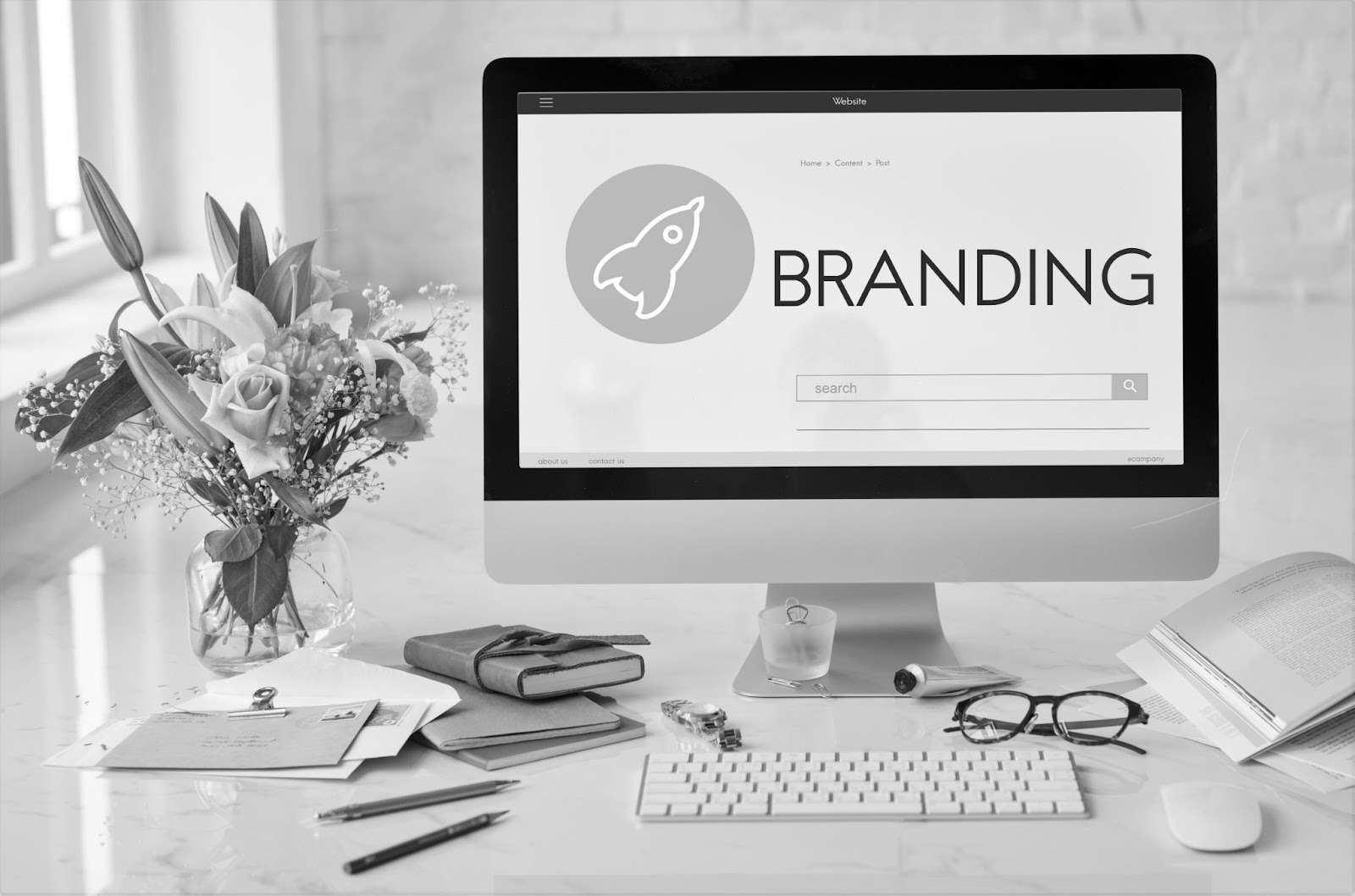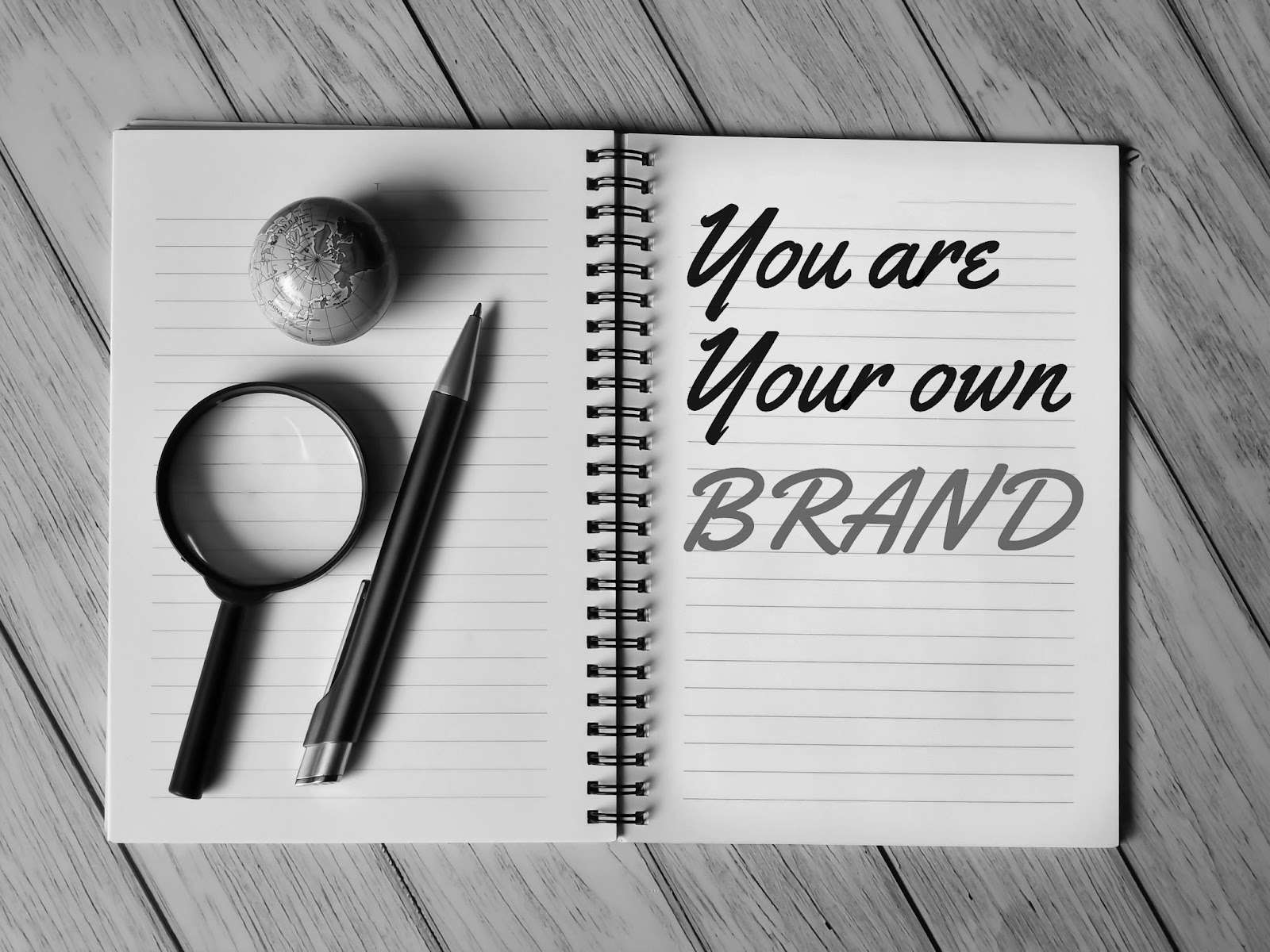The Ultimate Guide to Branding

Are you ready to brand your business? Don’t make the mistake of thinking that this process isn’t worth it.
A brand that is recognized and beloved by many is as important to a company as anything else. It is, in fact, one of the most important assets that a company can have.
However, building your own brand from the ground up is no easy task. There are a lot of questions you need to ask yourself. And, there are a lot of answers that you have to consider.
For example: What should your brand look like? How should it make people feel? Is the design eye-catchy or vanilla?
All these questions are inevitable. And, in order to answer them right, you’re going to need a good plan of action.
This guide was made for that very reason. After you’ve read it, you’ll be able to navigate through all the good and bad things you will encounter.
So, where to start? First, you need to know what exactly a brand is:
What is a Brand?

So, what even is a brand, anyway? Well, a brand isn’t just a name or a logo that you use to distinguish yourself from others.
Your brand decides how other people will perceive you. First impressions aren’t the only ones that are important here. Second, third and fourth impressions are also really important.
People are going to interact with your business. And, if they like what they get the first time around, that’s great. They will likely come back for more, which will make you even more successful.
However, if they happen to have a bad experience with you, don’t think that they will forget about it. In that case, you need to do your best to make sure that it never happens again.
But, it’s okay. You don’t have to be stressed about it. Just look at it this way:
You are a person with a unique name and face. You may have a specific dressing code. You may have several different ways to communicate with other people.
All of that will leave the first impression on the people who first meet you. But, the way that you behave in the future will also affect how they see you.
It’s the same thing with businesses. Yes, first impressions are important. But, that doesn’t mean that you won’t have to try as hard going forward.
A brand relies on how other people perceive you. Whether those people are within your business or outside it. All of them need to have a good perception of you.
To quote the founder of Amazon, Jeff Bezos: “Your brand is what other people say about you when you’re not in the room”.
That’s why consistency is key. Start being consistent with what you offer and how you offer it. And, remain consistent. That way, you will start walking the road towards success.
Brands help your business grow and evolve. But, can you really do that without them?
Why Should You Brand Your Business, Your Service, or Yourself?

As you read above, business branding is really important. But, can your business prosper if you choose to not brand it?
Well, to put it bluntly, no it will not. You see, branding isn’t just an extension of your business that may or may not help. Branding is essential for success.
It can help your business. It can help your service. And, it can even help you.
Now, you might think that your brand only consists of your logo. How it looks and how its color palette is.
Yes, those aspects do have a part to play in your brand’s success. But, they’re not all there is to a brand.
Your brand is an essential part of your business. It is, in fact, the entire identity of your business. Your brand is what gives your business more personality and edge.
Branding has always been a vital part of any business. But, it might be even more important now than ever before.
Why? Because of social media. Nowadays, more than ever before, consumers get to check out a lot of brands online.
However, this situation is a double-edged sword. This means that it’s both a good thing and a bad thing.
How so? Well, social media is an empire of the online world. It doesn’t matter what type it is. It can be Instragram, Facebook, Twitter or even TikTok. Social media can affect your brand a lot.
Seeing that people spend a lot of their time on social media, it’s fair to say that consumers get exposed to brands every single day.
Now, on one hand, that’s a good thing. If a lot of people get to see your brand, then that means that you can gain many customers.
However, on the other hand, that’s also a bad thing. Your brand is not going to be the only one that’s exposed out there. Customers have a lot of options to choose from. Which is not beneficial for your business.
All those other brands are your competitors. You don’t want your customers moving over to the other side.
And, this is already a disadvantage when you have a good brand. Imagine how hard it would be to compete with other businesses if you didn’t have a brand at all. It would be next to impossible to be successful.
This is why branding is important. As we said above, branding can benefit your business, your service, and yourself.
But, are these all the benefits that branding has to offer? What other benefits are there?
The Benefits of Branding

Yes, there’s a lot of competition out there today. That’s why businesses try their hardest to be the standouts among the rest.
However, you can be a standout one way or the other. You want people to see your business as the best one out there, not as the least credible one.
This also plays into why branding is so important. Do you want to know how exactly branding can help out your business? Here’s how:
The Benefits of Branding
Recognition
Recognition is not something that any business takes lightly. After all, if your business is solely recognized by a niche audience, then how will it ever be as successful as its competitors?
Well, here’s the thing, people pay more attention to branded businesses than unbranded ones.
Your business must always have strong branding. Without it, you’re not going to climb too high on the ladder of success, because people won’t really remember your business. That’s the result of poor branding.
Your business must have a lot of distinct qualities, like the logo, the colors, what it offers, everything. That way, it will stick with people. They will see it in a positive light and your branded business can gain a lot of recognition.
Build Trust
Trust is also incredibly important. If your audience trusts you, then your business can truly prosper.
Don’t get too ahead of yourself, though. Trust is really helpful. But that doesn’t mean that it’s easy to gain.
So, how can you build trust with your audience?
Well, first ask the questions: Would you choose a business that seems trustworthy, offers simple solutions, and seems friendly? Or, would you choose one that seems to make things unnecessarily complicated and hard?
Every single one of us would choose the first option because that one has stronger branding.
These are the types of questions that you need to ask. And, if you answer them right, you can build trust with your audience and a stronger business as well.
Improve Advertising
Here’s another reason why branding is so useful: Advertising.
In a way, you can say that branding and advertising are two chapters of the same book. And, just like a book, each chapter has to set up the one that comes after it.
The same applies to branding and advertising. If you want your advertising to be strong, you will need to build a strong brand first.
Why is that? Well, when you’re advertising your business, you want everything to be simple and understandable, not difficult and messy.
Remember, you want your business to stick with people. Well, that can only happen if your business has a strong brand that can pave the way for great advertising.
This is why branding is so important. You can help your business grow, or you can see it crumble down.
However, that’s not all that branding can do for your business. There are a lot of benefits that you can gain from internal and external branding.
Internal Branding

If you want to get a grasp on how a brand functions, you need to know how branding works internally and externally.
Internal branding has to worry about who perceives it and how it is perceived.
- Internal Perceptions
So, what exactly are internal perceptions about? Well, internal perception focuses more on how your employees perceive your brand.
This includes your image, identity, and how everything that you offer looks and works. You want your employees to see your business in a positive light. Otherwise, they won’t be able to influence your brand the way that you want them to.
- Employees Influencing the Brand
You want your employees to feel like they’re contributing to something. People who hate their job never work as well as the ones who love their job.
Well, if your company has strong branding, then there’s a high chance that you will get the latter, not the former.
Your employees can feel like they’re involved in creating something great. And not only that. Good branding also makes it easier for you to gain a lot more employees.
The more employees you have, the stronger your business can grow.
- Improve Morale, Productivity, and Revenue
As we mentioned above, you want your employees to feel like they’re part of something great. That will help out with the morale of your employees and your business in general.
But, morale isn’t the only thing that’s going to be affected. Their productivity will be too.
If employees work on something that they love, they will achieve a lot more than they would on something that they hated.
Now, your business can produce a lot of products in a short period of time. Seeing that your business is playing in a market full of competitors, that’s a good thing. The more your employees like the brand, the more productive they will be.
And, where does all of that lead? It leads to your business’ revenue gain getting bigger and bigger.
But, what about external branding?
External Branding
Alright, we covered how people inside your business can help you succeed. But what about the ones who are on the outside?
Other people’s opinions weigh whether or not your brand will be successful.
Similar to internal branding, external branding also worries about who perceives your brand and how it’s perceived. The “who” is what makes the difference, though.
- External Perceptions
External branding is concerned with how customers and partners feel about your brand. Whatever perception they have of all the elements that make your brand will factor into its success.
- What Your Partners and Customers Think of Your Business
Your customers play a vital role in your brand’s success. But, as we mentioned earlier, you will need to build trust with them.
And, trust is not easy to come by. You have to earn it.
You need the branding to do that. Customers want something that they feel like it’s trustworthy. You can never achieve that if your business is poorly branded or not branded at all.
And, this doesn’t just include your customers either. This also includes your partners. A poorly branded business is the right turn towards the wrong path.
- Focus on Communication and Advertisement
So, how do you exactly build a brand that your customers and partners will like?
To do that, you need to focus on how you communicate with your customers and partners. And, you will also have to focus on how you advertise your brand.
Much like advertisement and branding, communication and advertisement also go hand in hand. You might even say that advertisement is a form of communication.
How? Well, whenever you’re advertising a brand, you’ll need to make sure that you’re using the right words and elements.
Remember, people like simplicity. If what you’re advertising is complicated to understand, then it’s not going to stick with your general audience. Sure, you might get one or two people’s attention. But, you want more than just that.
You don’t want to stretch your audience out too thin. What you want is to advertise a brand in a way that will stick with the majority of your audience.
That way, your brand can start to rise in success.
Why is Value Proposition Modelling Important?

The value proposition canvas was created so you can make sure that there is a right fit between the product and the market.
And, for that to happen, you first need to know what your customers want and how your product can help the brand.
What the Customer Wants and How Your Product can Help the Brand
No matter what your business is, you will always have to fight with other businesses for your place in the market. After all, you’re not the only one who wants to build something great from the ground up.
But, in order to do that you have to pay close attention to what your customers want. And, for that, you need to really know your target audience.
But, even if you manage to achieve that, you still need to be ready in case whatever you propose doesn’t meet your customer’s expectations.
However, the good news is that you can avoid that. That’s exactly why a value proposition canvas was created.
The value proposition canvas is made out of the customer profile and the value map. Here’s everything you need to know about them:
Customer Profile
The customer profile worries about how other people feel about buying products from your business.
The customer profile consists of three categories:
- Customer Jobs
- Pains
- Gains
Customer Jobs
You have to focus on the jobs that your customers have done.
But remember, you shouldn’t just focus on the functional jobs. Emotional and social jobs are also incredibly important.
Pains
Pains For the pains, you need to focus on identifying the problems that many of your customers might face when they’re trying to get the job done.
These can be challenges that make their lives or their work a lot harder.
This leads us to the third and final point:
Gains
Gains are the opposite of pains. However, they also focus on the positive outcomes that your customers expect when the job is done.
This is all you need to know to have a well-rounded picture of what the customer profile is all about.
Now, it’s time to move over to the value map.
Value Map
The value map takes up the second half of the value proposition canvas. The value map focuses on how your products and services relieve pains and create gains.
With it, you can list:
- Products and Services
- Pain Relievers
- Gain Creators
Products and Services
Products and services are really important. They’re what your value proposition offers to get the job done.
Pain Relievers
As the name suggests, pain relievers focus on how products and services can minimize or reduce the pains. After that, you can focus on how to create the gains.
That way, the customer experience can be significantly better.
Gain Creators
As mentioned above, after you’ve focused on how to minimize or reduce pain with pain relievers, you can move on to gain creators.
Gain creators outline how your products and services create the gains and why they are so beneficial to your customers.
Through the value proposition canvas, you can gain “fit” by making it clear what customers want. And, by also focusing on how your products and services can ease pains and create gains.
Now, you know how to use the value proposition canvas to create products and services that customers are after. Alright, now we have covered what a brand is. You now know what internal and external branding benefits there are and what a value proposition canvas looks like.
So, what’s next? Well, now you need to create a brand exploration report.
Create a Brand Exploration Report

A brand exploration report is essentially a brand audit. You need to perform a complete analysis of the current state of your brand.
But, that’s not the only thing you need to focus on. You also have to analyze how your target audience and your competition are doing. That way, you can stay on top of everything, instead of being behind your competitors.
After you’re done analyzing everything, you should have a fairly clear picture of how your brand is doing. How it appears in the market, how the target audience sees it and how it fares against competitors.
First, you will need to focus on what your brand represents. What is your brand about?
What is the Brand About?
We spoke about how important other people’s perceptions of your brand are. But, what about your perception of the brand?
You need to know what your brand is about. And, if it’s being displayed right for the target audience.
So, what you need to do first, is not show any bias towards your brand. Your perception has to match other people’s perceptions of your brand.
You don’t want your customers to be confused or dissatisfied with your brand. You may like your brand, but you also have to remember that their perceptions are also important.
You want your brand to paint a clear picture of what your business is about. How do your products and services fare against others?
You also want your brand to be unique while still remaining professional.
That’s what a brand exploration report seeks to achieve. See how your brand is perceived by others and help you climb towards success.
And, every step you take towards that success has its own advantages and disadvantages. So, where do you begin?
First, you need to collect external and internal perceptions through research.
Collect External and Internal Perceptions Through Research
External and internal perceptions help your branded business grow. You should always keep that in mind when you’re collecting research.
Ideally, you can get someone who doesn’t have any biases towards the company. That way, they will look at other people’s perceptions as analytical data.
They can only focus on the research, which should provide a large amount of information and data which can improve other people’s experience with the brand.
In order to do that, you will need to conduct a questionnaire. All the questions have to be related to each specific category:
- Background
- Company
- Experience
- Market and Audience
- Values
Background
First, you need to focus on the background of your employees, customers, and partners.
Ask them to tell out a little bit about themselves. You can also ask how long they have been an employee/customer/partner at your brand.
You need to get to know them. Not only to build stronger relationships with them but also to learn what your brand might be missing.
Company
After you’re done getting to know their background, you have to focus on how they perceive your company.
Ask them to describe what your company does in their own words. What do they do for your company? Why did they choose you and how do they feel about you?
In the end, you can ask them to rate your company on a 1-10 scale and why they gave the score that they did.
Experience
Then, you can ask what kind of experience they had with your company.
Ask them what they wish you had done better. And also, what was great about it.
Market and Audience
Your market and audience are incredibly important for your business to succeed. Because of that, you really need to think about the questions that you need to ask.
Ask how the market currently sees your business. What goals do your employees/customers/partners have for the future and how your business can help.
You need to know how to better your brand. To do that, you should also ask what other brands inspire them and why.
Ask if they would recommend your brand and how it fares with other brands in the business.
How did they hear about your business, is it what they expected, and what is the best thing about it is.
Values
As for values, you have to know if they value your business. And, how they feel about your business values them.
Ask them what they would never change about your business.
Do they feel cared for? Is your business great at coming up with solutions for problems? How is your business’ personality?
And, you should also ask them to describe a time when your business was both at its best and worst.
All these questions will help you create a stronger relationship, not only with your employees but also with customers and partners.
Create Stronger Connections with Customers

A brand exploration report can help you create a lot of strong connections with your customers. Which is something that you desperately need if you want your business to be successful.
This questionnaire was made so you can achieve just that. Through it, you can pinpoint all of your strengths and weaknesses. What you’re doing right and what you need to improve.
Those weaknesses can create threats, such as unsatisfied customers. By eliminating those, you will be able to create more opportunities for your business to succeed.
Build Stronger Relationships with Partners
Yes, you don’t just have to worry about your customers. Your partners will also have a large role in your business’ success.
Luckily, the questionnaire won’t just help out your customers, but also your partners too.
They will give their professional opinions on how your business is doing and what it can do better.
They will also find all your strengths and weaknesses so they can eliminate all the threats that your business faces.
Everything About Naming

There are a lot of things that you have to consider when naming your brand.
Your brand’s name is what is going to set the tone for many things going forward. It needs to be simple, catchy, and fun to look at.
This is why you have to have an objective so that you can decide what to do and how to do it.
Have an Objective
There are a lot of things that you have to consider before settling on a name. Primarily, you need to focus on the dos and don’ts.
What are the dos? The dos include the things that you have to remember:
- Be open-minded. Don’t pass on a name just because it sounds too simple or too weird. Brand names like Nike or Amazon might seem very recognizable now. But, back when they were first pitched, some people probably thought that their names were too out of place.
- Be short and simple. You want something that doesn’t take a while to understand. If your customers have to ask many questions about what your brand name is trying to say, then you already have a problem on your hands.
- Tell a story without needing to say much. You want your customers to be drawn to your brand. Well, people are drawn to things that they find personal. You want to make them feel like they’re a part of something, not just people on the outside.
This leads us to the don’ts.
- Don’t play it safe. Don’t settle for a name that’s too obvious. You have to be unique and stand out. Not common and blend in.
- Don’t overthink every single little thing. If you do, you’re going to end up with something that no one likes.
You always have to think about what makes your brand stand out in the best way possible. For that, you have to define your own identity.
Define Your Identity
Through your identity, you’re going to convey the message of your brand, how your brand looks and what experience it offers.
Your brand strategy is what’s going to really influence how your identity is being presented.
There are a lot of elements that define your brand identity. These include:
- Content
- Messaging
- Website design
- Website icons
- Logo
- Colour Palette
- Packaging
All these elements are what define your brand identity. They each hold as much significance as anything else that makes your brand stand out.
Create the right web/social handles
So, what exactly are web/social handles? These handles are names that are associated with accounts. They can make it easier for other people to find your business and connect with you.
Essentially, social handles are a great communication tool that makes it easier for people to find your business online.
Something like this can prove to be really useful to your brand. You can interact with your audience a lot easier.
Although it depends on the type of platform you are using, handles usually appear under your name as “@something”
Yes, your brand account can also appear via username. But, handles make it easier for others to find your brand, communicate with you, and allow you to assist them.
We know, something like handles on social media wasn’t that big of a deal 10 years ago. However, nowadays they are a big deal. Every single business benefits from them greatly.
Speaking of handling branding and defining its identity, do you know what is used to define the foundation of a brand? The Messaging Framework.
Messaging Framework

Every single form of visual and verbal communication is derived from the Messaging Framework, as do all the brand decisions.
The Messaging Framework has to start with one simple thing. This can be either one simple word or idea that defines your brand.
After you’re done with that, you have to move over to positioning.
Positioning: How You Want to be Perceived
As the title suggests, positioning worries about how you want to be perceived.
You can see it as a journey. One that starts with how you perceive your brand and ends with how you can create the right image about your brand in other people’s minds.
You have to consider what your customers will think when they first see your brand. Will they perceive it negatively or positively? And, how can you turn the negatives into positives?
Tagline: A clarifying Thought that Associates You with Your Target Market
Have you ever felt that your customer is just not connecting with your brand? They might need something that can instantly pull them in. a tagline can help you with that.
A tagline can be a thought or a phrase that highlights what your business does.
Taglines always have to be short, clear, and simple sentences. At the same time, taglines have to clarify your brand’s value and what your brand’s mission is.
Target Audience and Buyer Personas
Your brand’s target audience and buyer personas are both really important. However, some might think they are one and the same thing. But, that’s not true.
A target audience is a list of traits which is shared by your business’ customers. This can include their gender, age, where they live, how much they make in a year, what their interests are, and so on.
However, the target audience isn’t as focused on the specifics as the buyer personas are. While the target audience focuses on an entire crowd of customers, buyer personas focus on each specific person in that crowd.
Thanks to the target audience and buyer personas, you can really get to know your customers and create a better marketing strategy.
Functional Benefits: The Reasons Why Your Customers Benefit From You
Functional benefits are related to what your brand offers. And, more specifically, how your customers can benefit from what you offer.
Functional benefits are meant to leave a strong impression on your customers. That, in turn, can help you rise above your competitors.
So, what can functional benefits be? They can be any sort of product that is more unique and beneficial than what your competitors offer. Such as the quality of a T-shirt, a bottle of water, or even a phone case.
Functional benefits can help your brand become more and more successful.
Emotional Benefits: Why do customers believe they benefit from you? Why do they tell themselves to do business with you?
‘ Emotional benefits make sure that your customers have a great experience when they use your brand.
Think of emotional benefits as the little details in a long-running TV show. People who are really casual watchers might not notice those details.
But, you will. That can leave you appreciating the program more because it’s rewarding you for paying attention to those details.
The same thing applies to any type of business. You have to focus on why customers believe that they benefit from you.
And, why do they tell themselves to do business with you? Your customers should always have a positive feeling when they think of your brand.
Other examples of emotional benefits vary between customers. This can be the feeling that they have when purchasing something ordinary from their usual shopping place. It can also be when they experience great service or when they donate to a charity of their choice.
Personality: What personality do you want to permeate through your communications
Personality can play a big factor in how you communicate with your customers. You always have to be careful and know that you are giving off the right vibes.
There are a lot of different personality types. All of which lead to different communication styles.
If two different communication styles crash into one another, you will result in two sides not knowing what the other is talking about. This is never a good sign.
What you want to do is set the right tone and make sure that others know what your personality is.
Stories: A simple way to explain how customers benefit from your business
When you’re explaining how customers can benefit from your business, try not to make the explanation boring.
An easy way to avoid that is by turning your explanation into stories. Stories can truly showcase what your business’ purpose is. Businesses with purpose fare better at getting customers.
Stories can make everything more relatable. That is something that can really benefit your business. Because people trust others who know how they feel. It makes them feel warmer and more comfortable.
Stories are a great way to achieve that.
Proofs: Proofs that support your claims
Proofs are also incredibly important. Without them, you wouldn’t be able to support your claims.
A marketing strategy without proof is just a series of claims without any base.
Yes, claims, promises, and statements are a part of any business strategy. However, that doesn’t mean that you shouldn’t base those claims, promises, and statements on some concrete evidence.
Proofs can make claims turn into facts. That way you won’t have to worry about your customers not trusting you and your brand anymore.
Brand Story
What is a brand story? A brand story is supposed to gather up every single thing that is created by your brand.
This can be the facts you have presented, the type of reaction you have gotten from customers, positive or negative.
There are a lot of things that can influence your brand, such as your product’s history. How it was marketed, its history, and so on.
Your business has to present itself by differentiating itself from other businesses. That way, you can get a positive reaction from customers.
Design a Logo

Designing a logo is arguably the most exciting part of building a brand. Your brand’s logo will appear in everything related to your business in one way or another.
Your logo will, in a way, represent your identity. So, how can you make sure that your logo can successfully show what your brand is all about? Here’s how:
Focus on the Message
Think about the message that your logo is supposed to convey. It should be something that is catchy and simple.
The message that you are trying to convey shouldn’t only focus on how the audience feels when it’s reading it.
Simplicity is the key here. The message shouldn’t be difficult to digest.
Make it Clear, Short, and Functional
Your message should be clear, short, and functional. Again, simplicity is the key.
You don’t want to write something that is way too complicated. You want to attract customers and make them feel comfortable.
You need to be clear in what your brand is offering. Keep it short and sweet. And, try to have the message appeal to your audience.
Be Consistent with Your Business Name
Your logo should represent that which your business seeks to accomplish. After all, you can’t just put together something that has nothing to do with your business and hope for the best.
That’s not how that works. Logos should represent your business. What do you stand for? What do you offer? What do you seek to achieve?
All the answers to those questions should be reflected in your logo.
Focus on Size
You don’t want your logo to be too big. But, you won’t want it to be too small either.
Your logo should be just big enough to fit in. Now, this also depends on the type of logo you’re using.
Nevertheless, your logo should always fit the right proportions. That way it can be pleasant for the eye instead of it being over-exposed.
Visual Foundation

Brand visuals don’t apply to just your messaging and writing style. They also apply to images, colors, and many other things that fit into the area.
So, what exactly does the visual foundation include? First things first, it includes the color palette.
Colour Palette
Many believe that color is a huge reason why people choose the products that they choose. And, that is true. The way that colors are integrated into your brand matters.
Earlier, we said that first impressions are not the only thing that matters. Well, when it comes to coloring, first impressions are really important.
Why? Because colors are the first thing that your customers see. Colors elicit certain emotions. And, in a way, they also hand out information about what your brand is about.
Your brand’s colors should represent your message while making people feel welcome.
Typography
Typography can affect your brand greatly.
Simply put, typography arranges your business’ written material so that it can mirror your brand’s personality more.
This process can be a lot of fun. You don’t always have to go for intricate designs. Again, simplicity is the key.
Simplicity can not only grab the attention of your audience, but it can also help you come up with something that will resonate with them.
Even though designing all of this can be a lot of fun, you shouldn’t do it on your own. Hire a professional instead.
Hire a Designer
You want to establish a strong and useful brand. And, as you can see, designing can be a large part of that process. So, what you need to do is hire a designer.
Hiring a designer will prove to be incredibly beneficial to your brand. A professional designer knows how to use the right colors and images.
Style is also an important factor. Luckily, a designer can make sure that your brand has a style that is simple and unique.
That way, your customers will feel like they’re experiencing something fresh.
Thinking outside of the box is a big bonus too. There’s nothing wrong with playing it safe. But, some risks might also prove to be a good idea.
Stationary Branding

Stationery branding refers to adding graphic art to items and products as a part of a marketing strategy.
This can make your brand stand out. And, your brand will also be more recognizable since the design is going to be the same for all items. The stationery branding can include:
- Standard Letterhead
- Standard Envelope
- Standard Business Card
- Pocket Folders
Here’s everything you need to know about stationery branding:
Be Simple but Unique
Don’t waste your time trying to be as intricate and complicated as possible. What have we said so far? Simplicity is the key.
People like something that is unique and easy to understand. Try to make the design fit that criteria and you’ll be good to go.
Include Name and Slogan
Don’t forget to include both your name and slogan in your design. If you don’t, then the design will be wasted.
Imagine if a customer picks up an envelope that has a really fun design, but no name or slogan. They wouldn’t know which company that design belongs to. So, they would probably just move on to something else.
You don’t want that to happen. That’s why you should always include both the name and slogan.
Eye-catchy Design
You want the design to pop. Try to be a little risky with the colors. But, be just enough so that your design will be unique.
Don’t go with the most obvious colors and design. That would just be boring. And, no one likes boring,
As we said, try to be risky while remaining loyal to what your brand is trying to do.
Create a Brand Book

Do you know what a brand book is?
A brand book is supposed to outline your business’s mission. What your identity is, what the exterior and interior of your brand are supposed to represent.
So, a brand book outlines everything that makes your brand work.
A brand book includes:
- Who you are
- Logo elements
- Colour palette and typography
- Applications and stationary system
Who You Are
In this section, you have to include what your brand’s story is. Who are you and how did you get here?
Here’s every point that you need to cover:
- Brand Story
- Messaging Framework.
There, you can include everything that we talked about earlier.
- Positioning and Tagline
- Target Audience and Buyer Personas
- Benefits
- Stories and Proofs
- Brand Personality
- Photography Direction.
Focus on how everything is handled and remember to keep everything tightly organized.
Logo Elements
As you can imagine, this section includes everything you need to know about logos. You have to cover all the elements that make a logo and how they were brought into your brand.
These are the points that you have to cover:
- Brand Logo
- Design Icon
- Logo Protection and Minimum Size
- Logo Versions
- Incorrect Logo Usage
- Watermark
- Design Element
- Design Element Application
Here, you can focus on how all the logos and designs are handled. Talk about what was incorporated and what was left out.
Colour Palette and Typography
Here, you can talk about the color palette and typography.
Talk about everything that was incorporated into the color palette. Focus on what colors you decided to go with and why. You can touch on how your customers can and will feel about the look of it all too.
The same thing goes for typography. Say how you arranged the wording. Typography should match your brand’s messages. You can touch on that aspect and focus on how everything was handled.
Applications and Stationary System
In this section, try to focus on every single element that fits into the applications and your brand’s stationary system.
Touch on these points:
- Logo Colour Applications
- Element Colours Applications
- Stationary System
- Standard Letterhead
- Standard Envelope
- Standard Business Card
- Email Signature
- Pocket Folders
The stationary system is a really important part of branding. That’s why you have to be careful and touch on all of these important elements.
Brand Packaging
Brand packaging allows you to build on your branding strategy through package design. Packaging can make everything feel more comfortable and organized.
It can also elevate the commodity of your customers, which can make them feel better about your brand.
Through brand packaging you can:
- Identify your brand
- Promote your product
- Keep the product safe
Identifying Your Brand
It’s always important to identify your brand. Why? Because if you don’t identify your brand, then how will people differentiate you from your competitors.
So far, we’ve talked about how your brand identity has to be unique. It has to gather a lot of elements and give your audience a clear picture of what your brand is about.
You should always identify your brand even through the packaging. Only then will your customers tell who is who.
Promoting Your Product
This is where packaging can really come in handy. You can promote your product.
Your brand identity can help you out tremendously in this section. You can focus on the logo, the colors, typography, and everything else that makes your brand.
Try not to make the promotion very crowded though. Be simple. Say a lot by saying a little.
Keeping the Product Safe
Through packaging, you can also keep it safe from any harm.
That’s what packaging is all about. Now, your customers can and will receive the products that they purchase in their original condition.
This can help a lot with your reputation. Which, in turn, will gain you even more customers.
Successful Branding Examples

Before you go and create your own brand, take a look at some examples of some people who were once in your shoes.
Apple
Apple is one of the most successful brands in our generation. What once was just the name of a fruit, is now one of the most gigantic, profitable, and well-known brand names on the planet.
No matter where you go, you will hear and see people talking about Apple or using Apple products. If a new Apple product comes out, you will hear almost everyone talk about it for weeks on end.
Their customer service is also well known, considering that the protocol of each Apple store is tied together depending on the place.
Coca-Cola
Coca-Cola is yet another brand whose name is known in the entire world. Coca-Cola is also not a new brand. This brand has been going strong for decades.
It’s been with us for so long, that it’s almost impossible to think of a world where this name wasn’t recognized by everyone.
How big of an impact has Coca-Cola left? Well, as we’re sure that you’re aware, Santa Claus is a big staple of the brand.
But, did you know that Coca-Cola was the first to depict Santa as a man who wore red and white? That’s right, before Coca-Cola, Santa Claus wore a more traditional Christmas outfit. That just goes to show how big of an impact this brand has left.
Starbucks
Starbucks is also a gigantic brand that everyone recognizes.
Its design has become somewhat iconic. It’s simple, cozy, and inviting. It’s exactly what you would expect from a brand about coffee and more.
Starbucks offers great service around the globe and it’s one of the most recognizable, if not the most recognizable coffee brands ever made.
Ikea
Ikea is also one of the most recognizable brands in the world. However, Ikea is not recognized for its coffee. It is known for selling a variety of furniture.
This brand knows its audience. They know what people want and need. And, they provide the people with just that.
It’s no wonder why Ikea is a brand unlike any other.
Uber
Uber has quickly become one of the fastest-growing brands in the world. Uber makes sure that people can be transported from one place to another in great comfort.
They also have a great marketing strategy. Uber doesn’t just work in the US, but around the globe too. That way, when you travel to another continent, you can have a familiar mode of transportation ready for you.
Common Branding Myths

Take a look at some myths that way too many people believe to be real. All of which have been proved to be false
Perfect Products Guarantee Success
Some people believe that it doesn’t matter if you have a brand or not. As long as your product is amazing, you can be as successful as they come.
Well, that’s not true. It doesn’t matter what kind of product you have. Without a brand, there’s no way anyone will even know that your product exists.
Brands are the flavor that is wrapped around your product. They are the reason why your product can and will stand out against competitors.
There is Only One Way to Build a Brand
If you think that there’s only one way to build a brand, then you’re wrong. Not everyone follows the same strategy. If they did, either no brand would succeed or all of them would.
There isn’t just one way to go about building a brand. You should focus on what you offer, how you offer it, and go from there.
Your brand also needs to stand out. That wouldn’t be possible if there was only one way to build a brand.
Branding and Advertising are the Same Things
This myth of branding and advertising being the same thing is understandable, albeit untrue.
Branding and advertising are not by any mean the same thing. But, they do work together.
Branding is all about the identity that you create. Advertising helps you showcase that identity to the world. So, as you can see, they might work with each other. But, branding and advertising are not the same things.
Branding is Very Expensive
Branding can be expensive. However, that doesn’t mean that it has to be.
You can learn more about who your audience is. Learn how you can help them and value them. Use social platforms to connect with them.
These methods can build excitement and spread the word about your brand.
Branding is by no means easy. It’s very hard to build something from the ground up. But, that doesn’t mean that it’s impossible either.
Questions You Might Have

1. How can you simplify your brand identity?
What you need to do is make sure you identify what you have, what you want, and what you need. Find all the elements that best represent your brand. Keep those and get rid of the rest. Then work with the one you kept. Now, you can build something in a simpler way.
2. What colors should you choose?
Colors and emotions go hand in hand. This is about your brand and what you’re trying to say. Now, associate that message with colors.
Hopefully, your colors will already be eye-catchy. But, if they’re not, there’s nothing wrong with trying different things. Settle on what you think it’s best and what you think your audience will like.
3. How can you speak your audience’s language?
You should always try to be helpful and understanding. Try to put yourself in their shoes. See how you can help them. Don’t be too aggressive. Focus on what they need and what kind of person they are and adapt to it.
4. How can you be different?
To be different from others, you first need to know what your competitors are offering and how they are offering it.
Check out your competition. Learn everything you can about their brand. Then, try to differentiate yourself from their ideas by coming up with your own.
Get to Work!

Branding your business can be really scary. But it’s also really necessary.
If you don’t brand your business you won’t be able to advertise any of your products. Your business won’t be able to prosper and neither will you.
But, there’s no need to worry. You now know every single thing that there is to know about branding your business. You know how to build both the exterior and the interior of your brand.
You know how to find the right audience for your brand and how to keep them too.
After taking all the steps necessary to create your brand, you can now take another step towards success.
Brandsonify offers high performance Coaching, Branding,
Marketing, Advertising, Technology, and AI & Big Data
solutions for challenger brands.
Recent Case Studies
Airbnb’s 2014 Rebrand
Founded in 2008, Airbnb is a company which has revolutionized the lodging industry and created a global phenomenon. It is also a majorly disruptive force…
CONTINUE READING
Dunkin’s 2018/19 Rebrand
The first time the world saw the name Dunkin’ Donuts was in 1950. The original shop opened in Quincy, Massachusetts and it did not take long for the public to fall in love…
CONTINUE READING
Uber’s 2018 Rebrand
Uber has made such a massive cultural impact in a relatively short period of time, that it doesn’t need much of an introduction Founded in 2009, it is the default ride-hailing…
CONTINUE READING



